Experiences refined for people
Experiences refined for people
Following a similar update to mobile search results in October 2021, search results on desktop now produce a continuous scroll rather than requiring users to click “see more” or navigate from page to page. This user experience update utilizes a similar interface to many social media platforms and mobile apps. The seamless flow from “page one” ranking content to “page two” will impact both how people search and how your content (organic and paid) may perform in the future.
📱 October 14, 2021: Google Rolls out continuous scroll on mobile search results
🖥 December 5, 2022: Google Rolls out continuous scroll on desktop search results
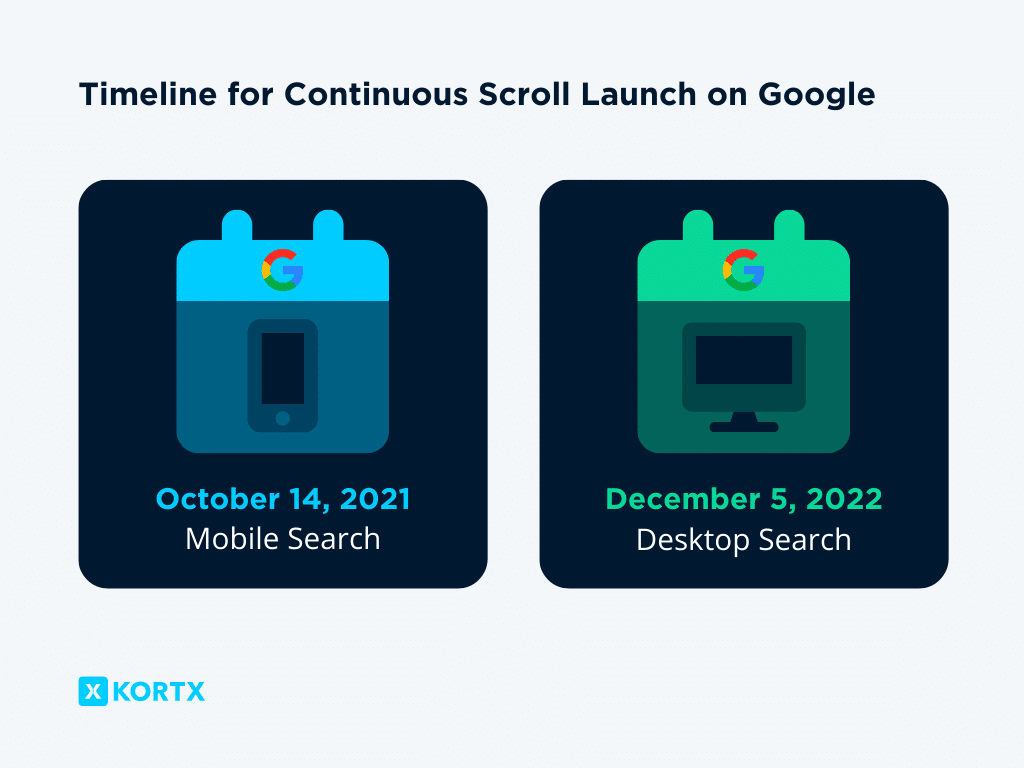
Continuous scroll refers to a user experience wherein the next set of content automatically loads each time a user reaches the “end” of a particular page. This does not require a click to move forward within the content. Other terms for this feature include infinite scroll or lazy loading. Currently, Google will showcase 6 total “pages” of content before requiring a click or around 60 search results.
Why did Google move to a continuous scroll model?
“It feels like another step on the road to a mobile-first web. It’s always easier to scroll than to aim and tap/click, but here Google seems to be concluding that the main UX for the social web (infinite scroll) is also best for search UX. The evolution of the web is a convergence of UX patterns and this is just another example.”
Any changes to Google search results and the user experience will impact organic and paid search traffic. When these changes occur, SEO and paid search specialists need to pay special attention to how their content and ads performance changes.
Now that users have less friction when moving from one page to another, they may be more likely to explore lower-ranking options. This will increase your content’s ability to gain new users and traffic. When reporting on search numbers, keep an eye on your number of impressions and clicks. Impressions will increase with this exposure. It remains to be seen whether or not this will translate into clicks.
Continuous scrolling will likely impact SEO traffic in several ways. With less friction for users to see traditional “page 2” results, this content may see increased traffic in the coming weeks and months. If this happens, searchers may skip those initial listings, leading to less traffic for the top ten spots.
This change will likely be minimal and insignificant. It is important to remember that 0-click searches or searches that do not result in a click from search results are rising, hitting 25.6% of total desktop and 17.3% of total mobile searches as of October 2022.
Aggregate click-through-data on the SERPs also shows us that users continue to click on the top 3 spots over all other rankings. The average CTR for content ranking in spot 10 is only 0.8%, making it clear that many users rarely scroll to the bottom of page one. There is, however, a slight bump for listings at the top of “page two,” which could point to increased traffic post-scroll.
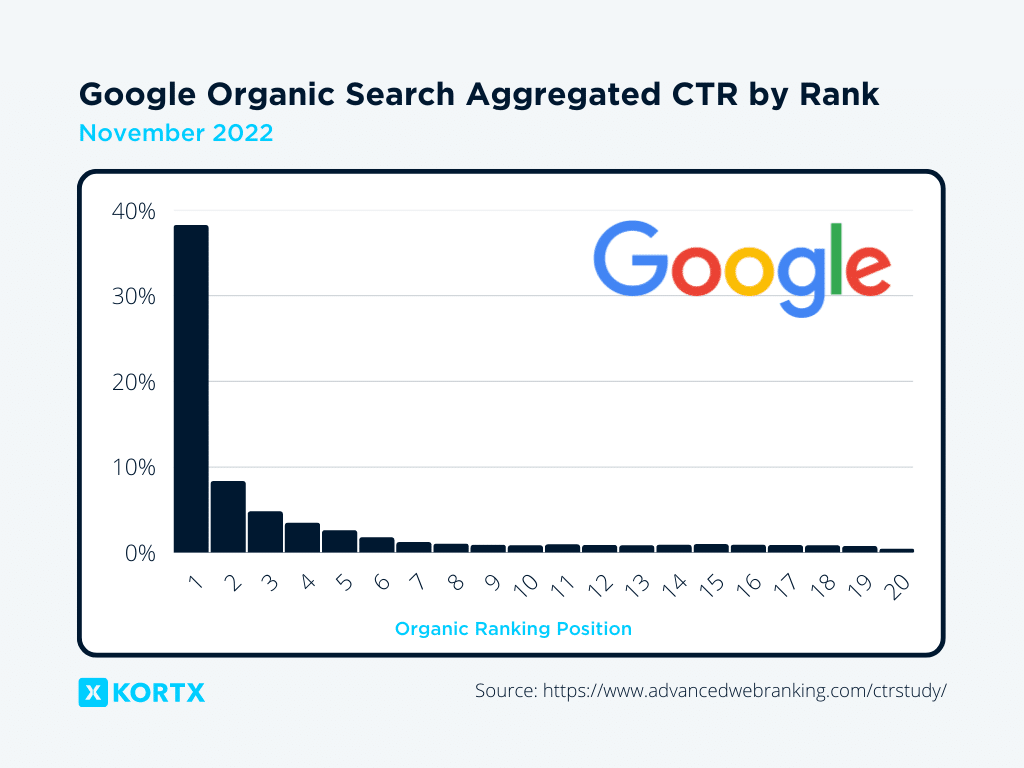
On-page SEO optimization and content best practices will not need to change to adjust for a continuous scroll. Instead, SEOs and content creators should focus on doing their best to stand out within search results. As users continue to scroll, you’ll want to catch their eye with unique listings.
A blue link and meta description are easy to scroll past. Instead, consider adding distractions and standout features to your listings. Some core ways to do this include:
With more and more users scrolling past the first few listings on the SERP, it will become increasingly important to stand out. This includes using keywords and unique ways to catch a searcher’s attention. Check the results to make sure your headline is different. Try a question if everyone else on the results is using a list format. Use new and exciting words to stand out. Much like social, search results should now showcase your unique brand voice.
Using appropriate schema on your content will help add all those shiny bells and whistles within search results. Consider implementing FAQs, reviews, and product schema to ensure your content stands out.
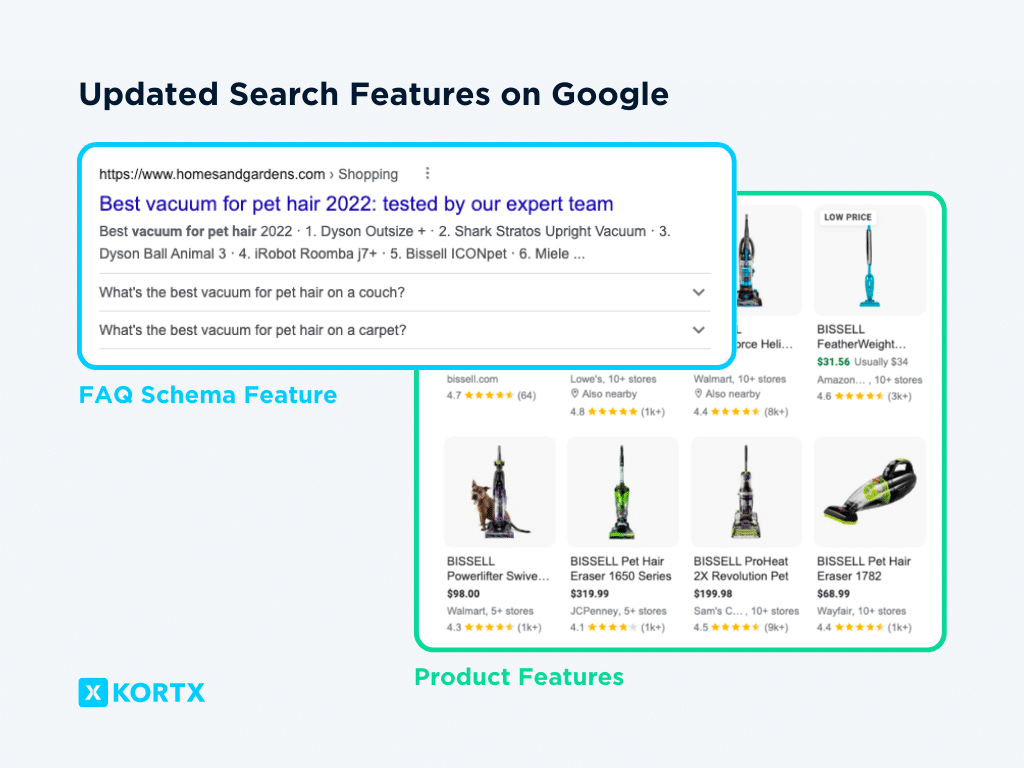
Are there any unexpected ways to stand out in search results?
“I’m seeing favicons appearing next to search results lately. We’ve seen this come and go before so I don’t know if it’s here to stay. Confirm you have a favicon and if possible use a bright, warm color. That little bit of contrast can help guide the eye toward your search listing.”
Google is continuing to add more and more search results features to their pages, particularly on eCommerce and shopping terms. This includes search refinement options by brands and type, reviews, and more.

Many of these features drive product images and Google Shopping. Ensure that your product landing pages include all necessary info (price, features, use cases, etc.) and are optimized well for Google shopping through product schema.
How do you stand out on such a busy SERP?
“The best way to stand out and succeed within search results is to work with Google. Instead of ignoring new features like best lists and search refinement features, research them. These search features provide a hint to the kind of words and information you should be using when describing your products.”
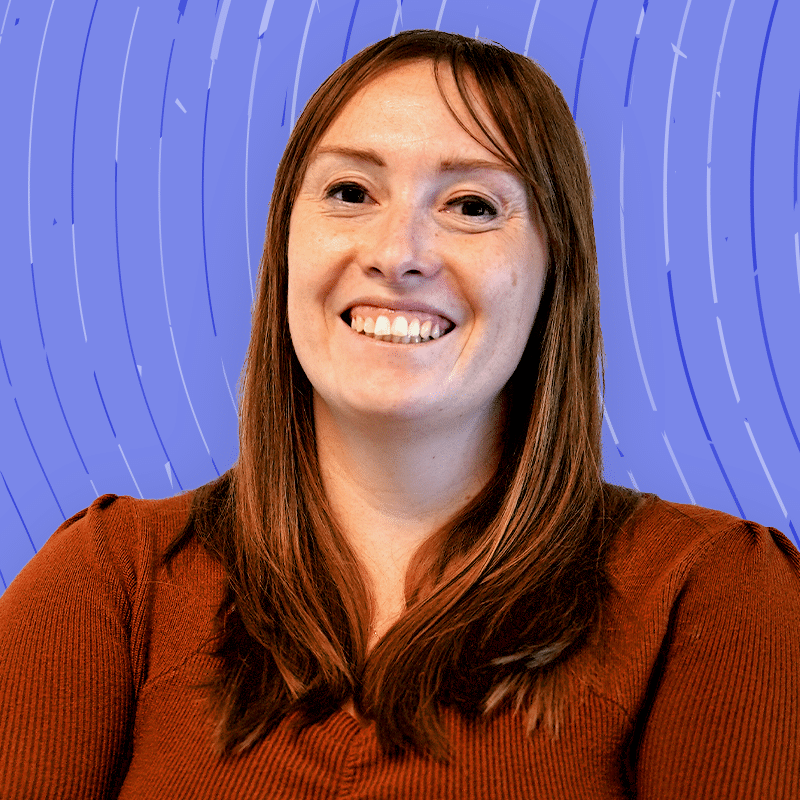
If your team isn’t leveraging SEM, now might be the time to start.
The new continuous scroll experience is a win for those hoping to gain further clicks from their paid search efforts. Now that a new page click is a scroll, the ad experience is more seamless and inconspicuous. Users expect to see an ad at the top of the screen and have trained themselves to look past it. The action of scrolling, however, autoloads ads amidst traditional search results.
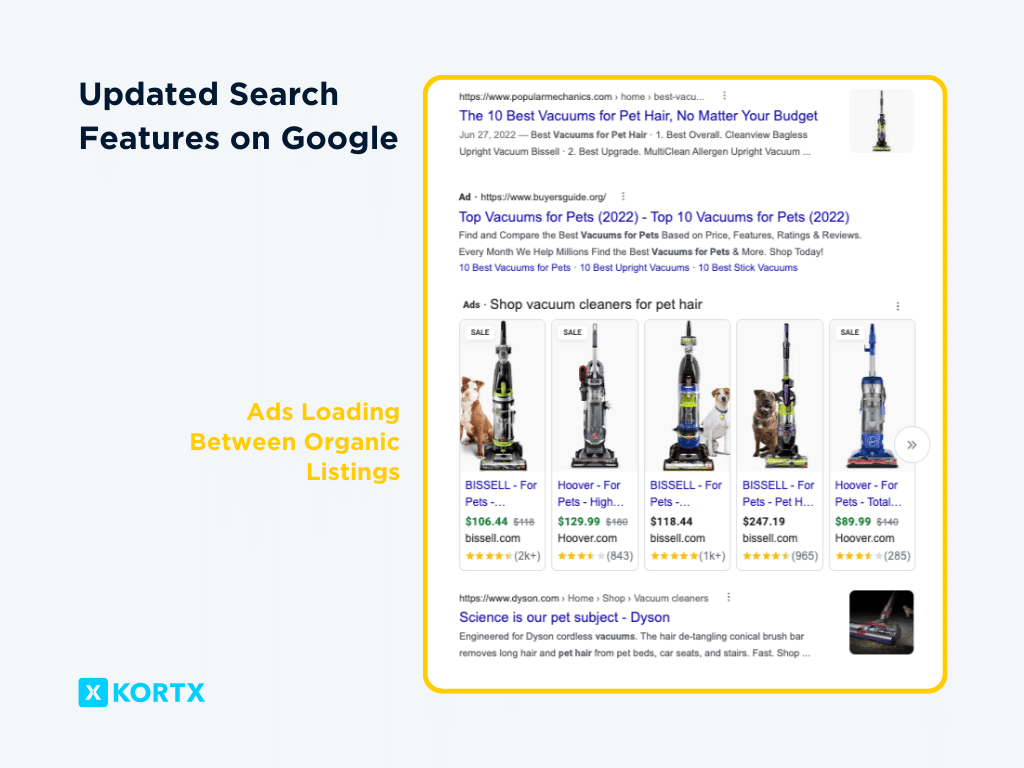
Will the new continuous scroll UX help paid search?
“Google is becoming more purposeful in making paid search ads look like organic listings, probably resulting in more clicks ($$). This is good for marketers as it allows their ads to not look like “ads,” which can sometimes deter a user from clicking.”

While paid search marketing has been a go-to channel for marketing teams for years, this change presents new and unique opportunities to showcase your products and services in search results. With continuous scrolling released and users becoming more and more scroll happy on social media, this behavior is beginning to translate to search results. Consider pushing more money into paid searches and taking a closer look at how these ads perform. You can optimize in new and exciting ways as the search results evolve.
The true impact of the change on the search results users experience will only truly be understood once the change has been live for a few months. This change will be specific to each brand and website. Organic search impact will depend on search presence and factors that help you stand out. Paid search will continue to rely on optimization and budget but will likely include expanded opportunities.
Our team can work on an on-demand basis to provide technical audits, content suggestions, and training for your team. We also offer monthly, ongoing SEO consulting services.
About the Author
Josh Pettovello is a University of Michigan graduate who enjoys all things data, SEO, and nerding out.
From us to your inbox weekly.